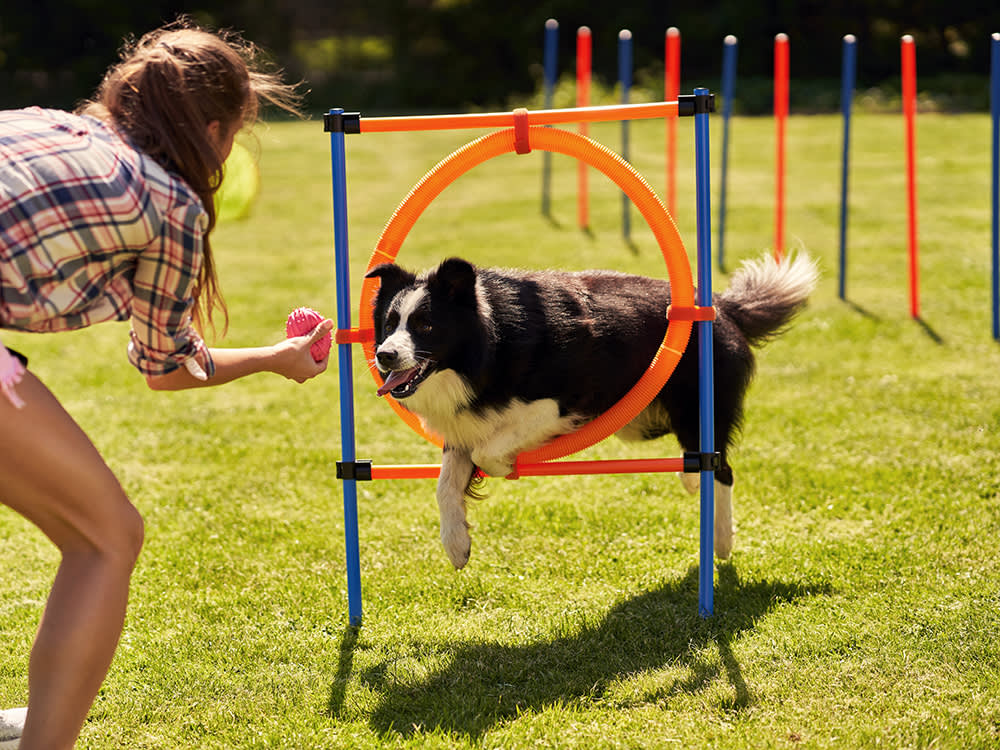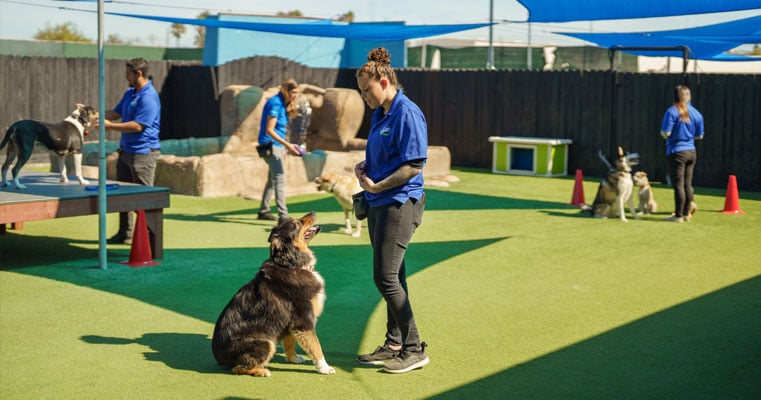Just how to Choose the Right Method for Effective Dog Training
Just how to Choose the Right Method for Effective Dog Training
Blog Article
Important Tips for Successful Dog Training: An Overview for Pet Owners
Reliable pet training is a complex process that needs a strategic approach tailored to both the pet dog's character and the proprietor's objectives. Recognizing just how to navigate these barriers can substantially boost the training experience, ultimately changing the connection between proprietor and canine.
Understanding Canine Behavior
Comprehending pet dog actions is necessary for efficient training and cultivating a harmonious connection in between canines and their owners. dog training. Dogs interact mainly with body language, articulations, and actions, making it critical for proprietors to translate these signals properly.

Socialization plays a substantial function in pet actions; exposure to various settings, individuals, and various other pets can dramatically influence a pet's personality. Aspects such as type features and private temperament ought to guide training approaches, as some types might have particular behavioral characteristics that demand tailored techniques. By comprehending these aspects, proprietors can develop a helpful atmosphere that encourages favorable behavior, resulting in effective training end results and a deeper bond with their animals.
Developing Constant Commands
Effective interaction with your pet dog starts with establishing regular commands. This foundational element of training is crucial for promoting understanding between you and your pet. Consistency in the commands you make use of makes sure that your dog can reliably connect details words or phrases with the desired behaviors.
When selecting commands, pick clear, unique words that are simple to set apart and say from each other. Stay clear of using similar-sounding commands that may puzzle your pet. Using "sit" and "stay" is appropriate, but "rest" and "struck" can lead to misunderstandings.
Additionally, maintain the same tone and volume for every command. Pet dogs are sensitive to singing signs, so differing your tone can produce confusion.
It is equally crucial to make certain that all member of the family get on the same page concerning the commands made use of. A united front in command usage will protect against mixed signals and reinforce the understanding process.
Positive Reinforcement Strategies
The power of positive support in dog training exists in its ability to motivate preferred behaviors with benefits and praise. This method is based in the concept that actions followed by beneficial outcomes are more probable to be repeated. By integrating favorable reinforcement into your training regimen, you can properly form your pet dog's habits in a useful way.
To execute favorable reinforcement, it's necessary to determine what inspires your pet dog, whether it be treats, toys, or verbal praise. When your pet dog executes a desired activity, such as resting on command, promptly reward them with a reward or love. This organization between the command and the favorable outcome strengthens their understanding.
It's critical to timing the incentives appropriately; delivering the reinforcement within secs of the desired actions assists your pet dog make the connection (dog training). In addition, uniformity is crucial-- make sure that all member of the family use the same commands and benefit systems to stay clear of complication

Progressively, you can lower the regularity of deals with as your pet dog discovers the actions, transitioning to praise or periodic benefits. This approach not just cultivates a solid bond between you and your pet dog however likewise advertises a positive understanding environment, making educating a satisfying experience for both.
Socialization and Communication
Constantly revealing your pet dog to a selection of settings, individuals, and various other pets is important for their social growth. Socializing ought to start early, ideally throughout the vital home weblink window of 3 to 14 weeks, when young puppies are most responsive to new experiences. Nonetheless, older canines can also gain from continuous socialization initiatives.
Present your pet dog to various setups, such as parks, pet-friendly shops, and metropolitan locations. This exposure helps them adapt to numerous stimulations, reducing stress and anxiety and concern feedbacks. Encourage favorable communications with various other pet dogs and people, guaranteeing that these encounters are regulated and risk-free to cultivate confidence.
Utilize structured playdates with well-mannered dogs, as this can enhance your pet dog's social abilities and educate them suitable behavior. Obedience classes and training sessions also supply excellent possibilities for socializing, allowing your pet to interact with others in a supervised setting.
Monitor your canine's body movement during communications, as this will certainly aid you assess their convenience degree. Gradually raise exposure to even more tough situations while making certain that each experience declares. A well-socialized pet dog is most likely to exhibit balanced actions, making them a pleasure to have in any type of setting.
Dealing With Usual Training Difficulties
Every canine owner will certainly run into training difficulties at some time, despite their pet dog's age or socialization level. Determining typical concerns such as stubbornness, interruptions, and fearfulness can assist in establishing effective strategies for improvement.

Gradually present distractions as the pet ends up being much more competent in commands. Short, constant training sessions are likewise effective in preserving interest.
Terror can impede a her latest blog pet's discovering procedure. Gradual desensitization to the resource of worry, coupled with positive reinforcement, can help alleviate stress and anxiety. Perseverance is critical; never ever force a canine into a scenario that creates distress, as this may worsen the concern.
Inevitably, understanding and addressing these typical challenges with a structured strategy will cultivate a more efficient training experience, reinforcing the bond in between pet dog and proprietor while promoting reliable knowing.
Conclusion
In summary, effective pet dog training depends on a thorough understanding of canine actions, the establishment of consistent commands, and the application of positive reinforcement strategies. Socializing plays an important duty in creating well-adjusted pets, while dealing with typical training challenges requires perseverance and flexibility. By applying these vital methods, pet dog owners can foster a solid bond with their dogs and advertise desirable habits, inevitably resulting in an unified connection in between her latest blog people and their canine buddies.
Understanding dog actions is necessary for efficient training and promoting an unified relationship between dogs and their owners.Socializing plays a substantial role in pet habits; direct exposure to different atmospheres, people, and other animals can significantly impact a dog's personality.The power of positive support in pet training exists in its capacity to encourage desired behaviors via incentives and appreciation. By incorporating favorable reinforcement right into your training routine, you can successfully shape your canine's actions in a constructive fashion.
In summary, successful canine training counts on a comprehensive understanding of canine habits, the establishment of consistent commands, and the application of favorable reinforcement strategies.
Report this page